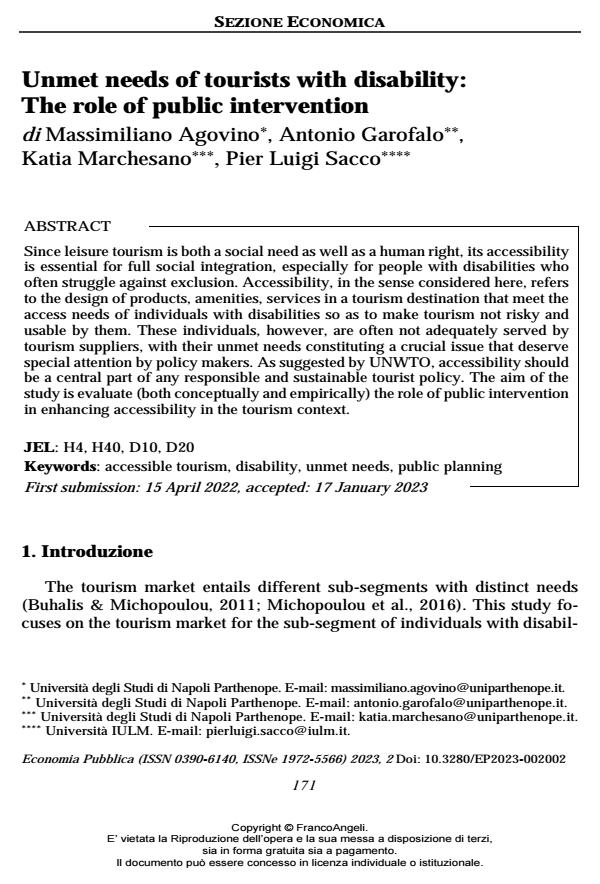Unmet needs of tourists with disability: The role of public intervention
Journal title ECONOMIA PUBBLICA
Author/s Massimiliano Agovino, Antonio Garofalo, Katia Marchesano, Pier Luigi Sacco
Publishing Year 2023 Issue 2023/2
Language English Pages 24 P. 171-194 File size 293 KB
DOI 10.3280/EP2023-002002
DOI is like a bar code for intellectual property: to have more infomation
click here
Below, you can see the article first page
If you want to buy this article in PDF format, you can do it, following the instructions to buy download credits

FrancoAngeli is member of Publishers International Linking Association, Inc (PILA), a not-for-profit association which run the CrossRef service enabling links to and from online scholarly content.
Since leisure tourism is both a social need as well as a human right, its accessibility is essential for full social integration, especially for people with disabilities who often struggle against exclusion. Accessibility, in the sense considered here, refers to the design of products, amenities, services in a tourism destination that meet the access needs of individuals with disabilities so as to make tourism not risky and usable by them. These individuals, however, are often not adequately served by tourism suppliers, with their unmet needs constituting a crucial issue that deserve special attention by policy makers. As suggested by UNWTO, accessibility should be a central part of any responsible and sustainable tourist policy. The aim of the study is evaluate (both conceptually and empirically) the role of public intervention in enhancing accessibility in the tourism context.
Keywords: accessible tourism, disability, unmet needs, public planning
Jel codes: H4, H40, D10, D20
- Social capital as a driving force for accessible tourism Massimiliano Agovino, Katia Marchesano, in Anatolia /2025 pp.138
DOI: 10.1080/13032917.2024.2366911
Massimiliano Agovino, Antonio Garofalo, Katia Marchesano, Pier Luigi Sacco, Unmet needs of tourists with disability: The role of public intervention in "ECONOMIA PUBBLICA " 2/2023, pp 171-194, DOI: 10.3280/EP2023-002002